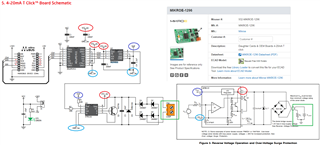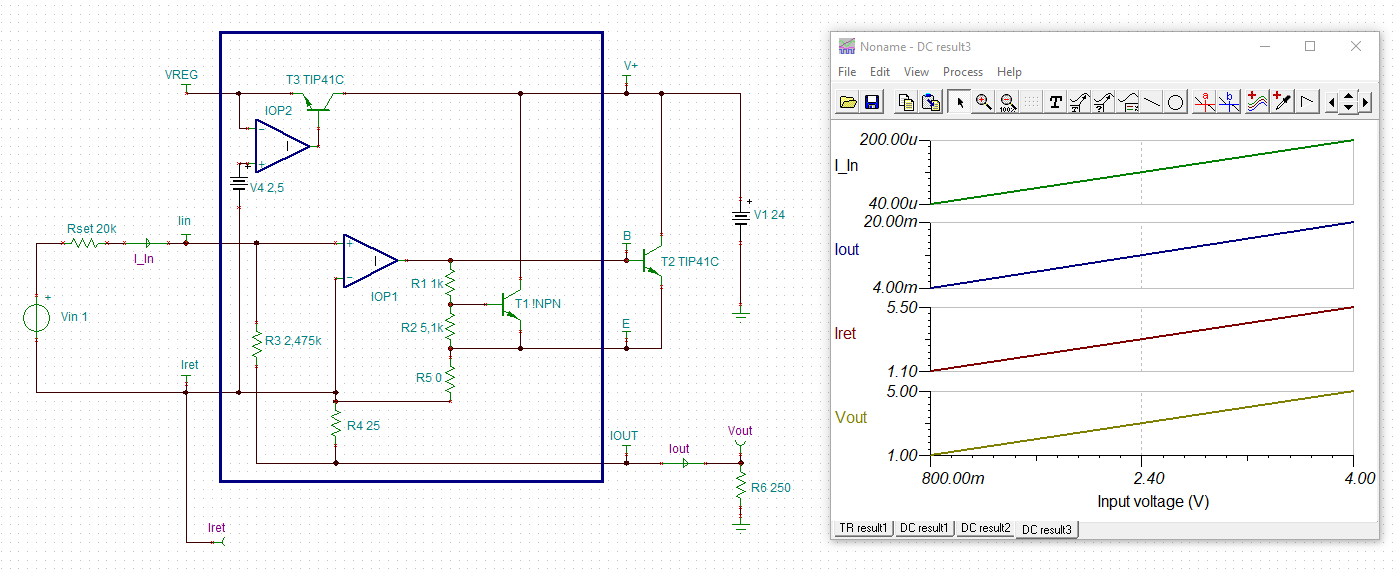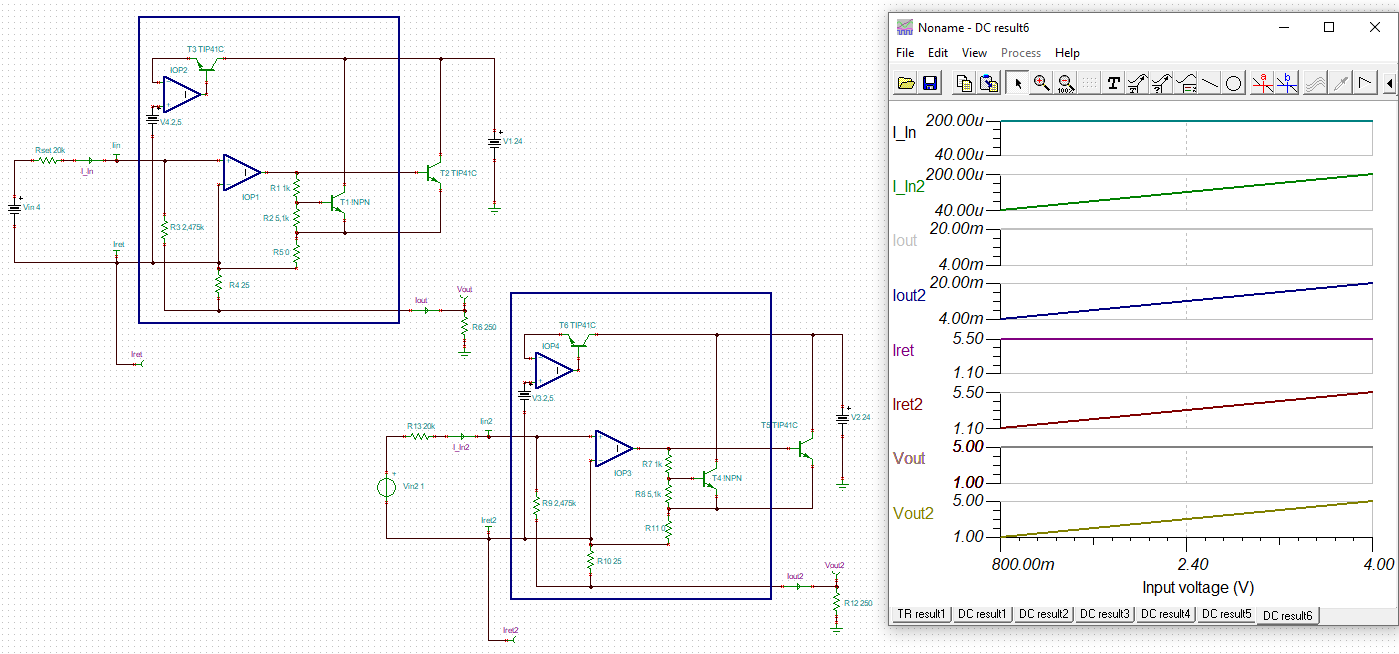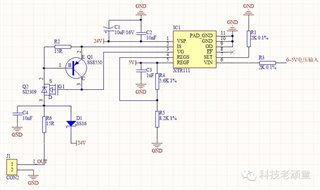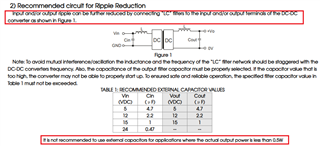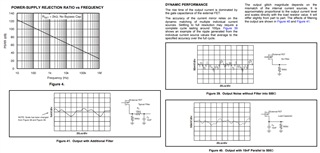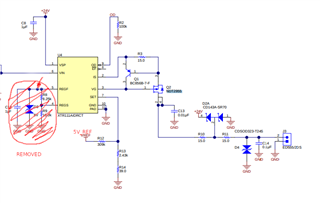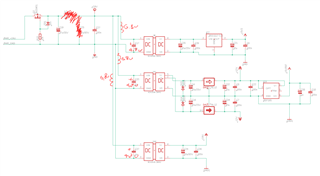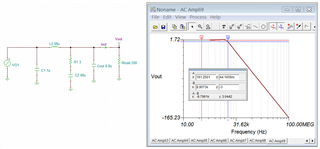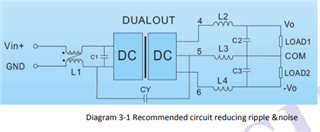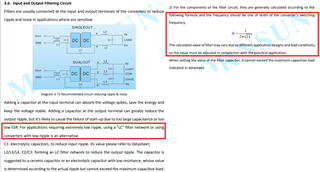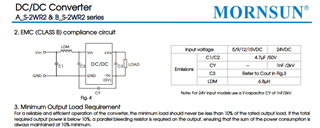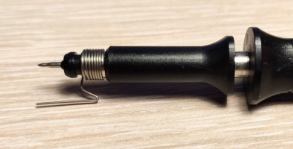Other Parts Discussed in Thread: XTR116, , OPA2188, XTR111, TIDA-01536
Hello,
I'm building an isolated bipolar +-10V or current 4mA..20mA output module.
The voltage generator use an SPI isolator and 16 bit DAC.
The power lines are:
- 5V reference voltage (REF195)
- +-12V
- +24V
The output voltage works and it's been tested, it is based on the TI paper [SLAA869] Unipolar voltage output DAC to bipolar voltage output circuit.
The current output it's based on a commercial board, the MIKROE-1296.
Not sure if the output component and wiring diagram is correct, before building It i ask you a kindly check.
- NPN BCP56: www.nxp.com/.../BCP56_BCX56_BC56PA.pdf
- Diode SMBJ33A: www.littelfuse.com/media
- Bridge DB107S: https://www.rectron.com/public/product_datasheets/db101s-db107s.pdf
Also If possible, can you give me a hint on the power stage? That's based on the MORSUN 2W dc-dc modules.
- MORSUN 2W isolated DC-DC converter: www.mornsun-power.com/.../B2412S-2WR2.html
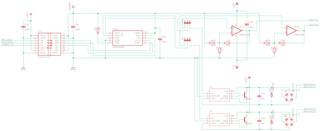
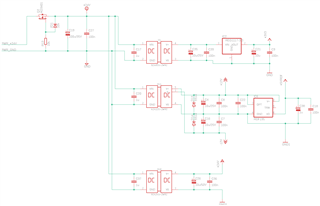
Thanks!


